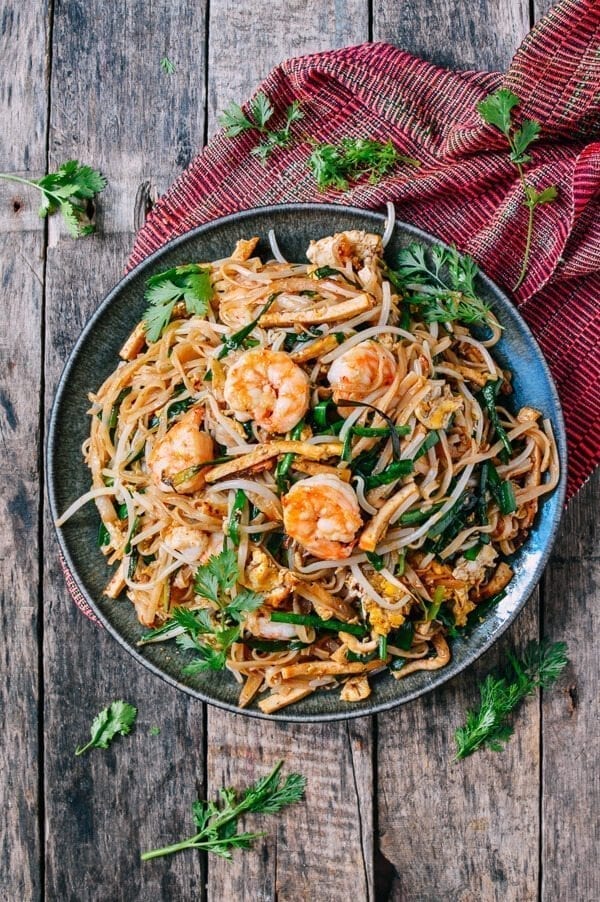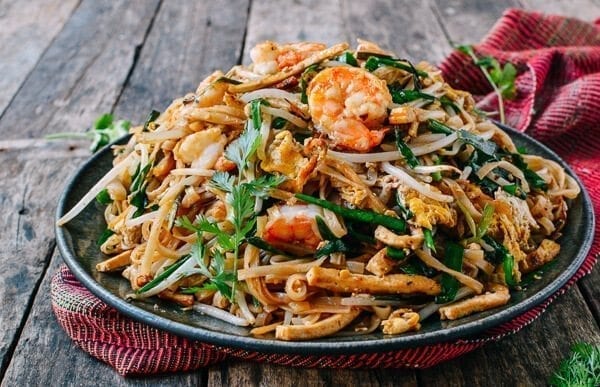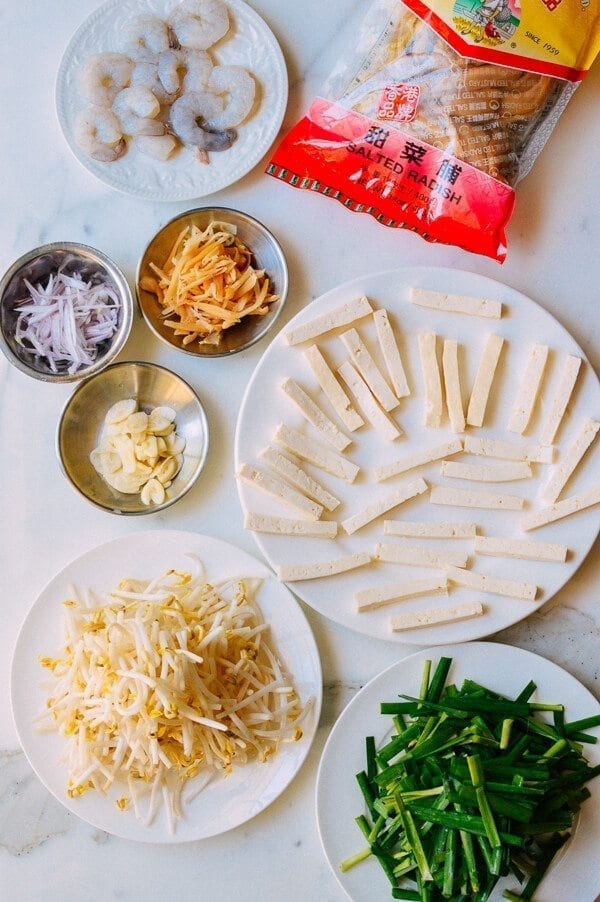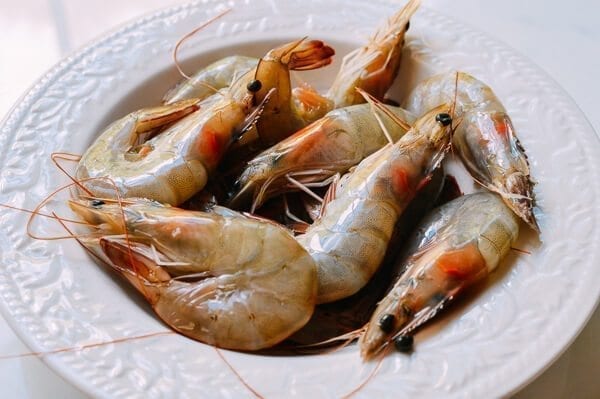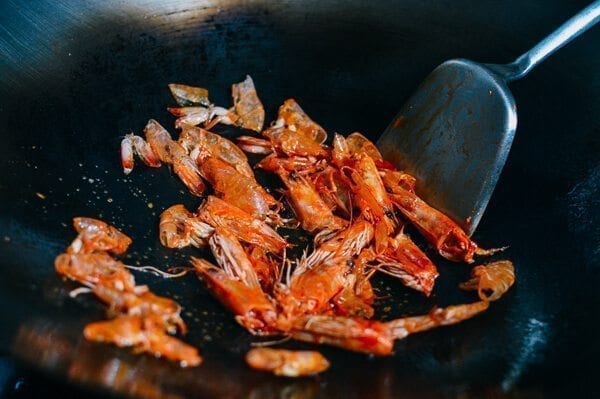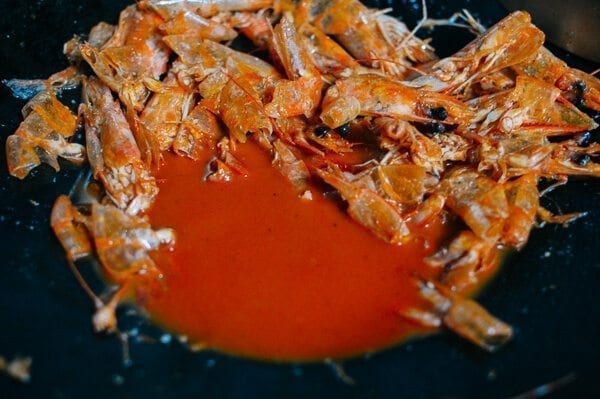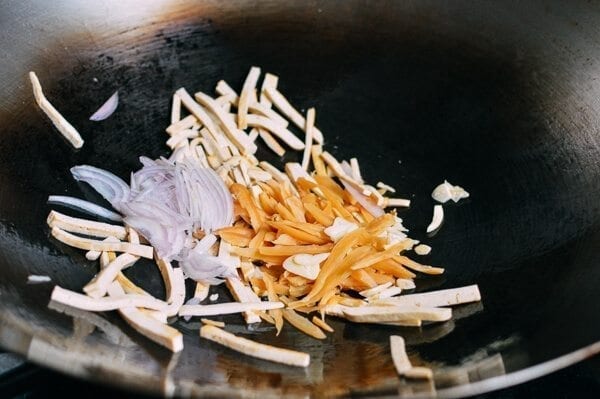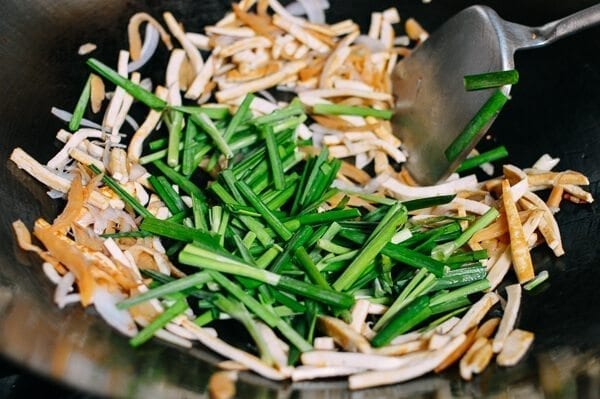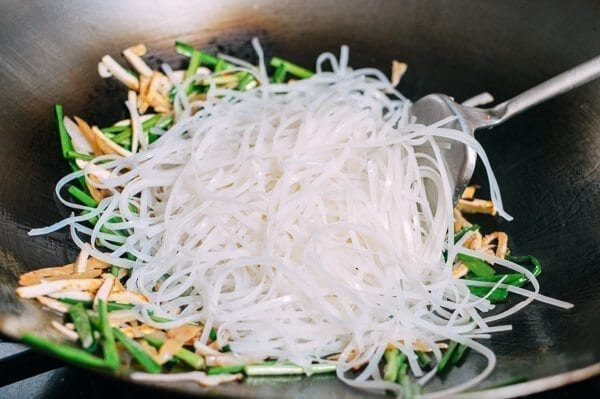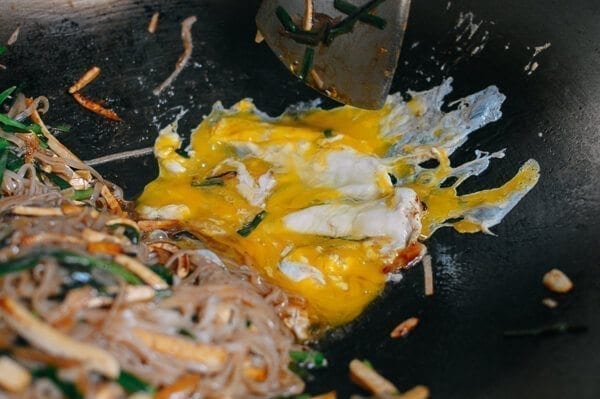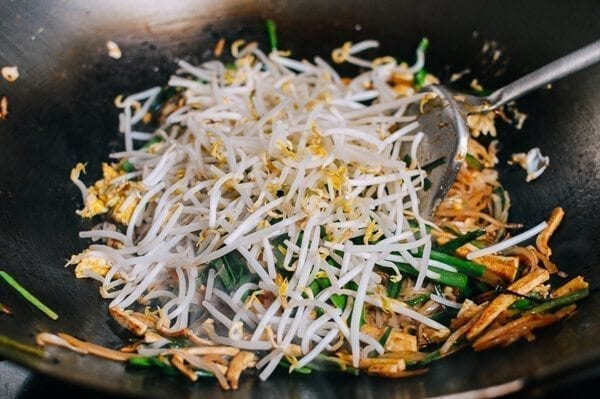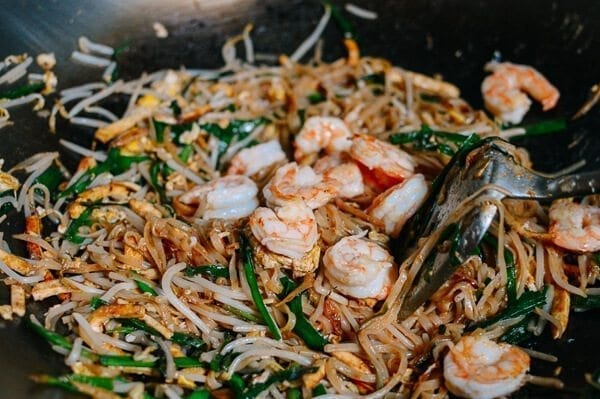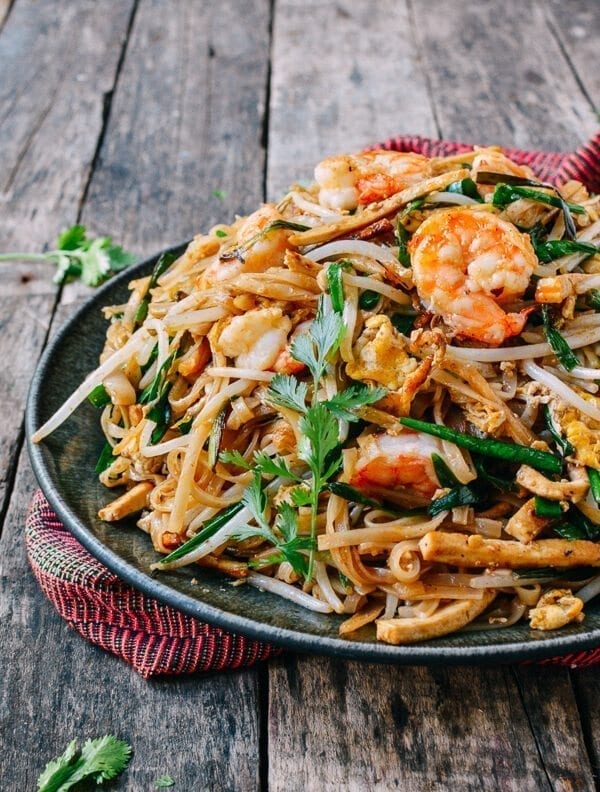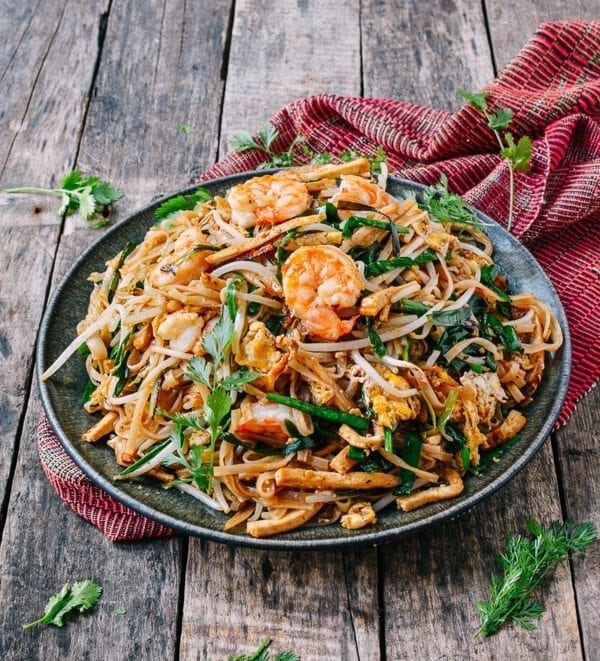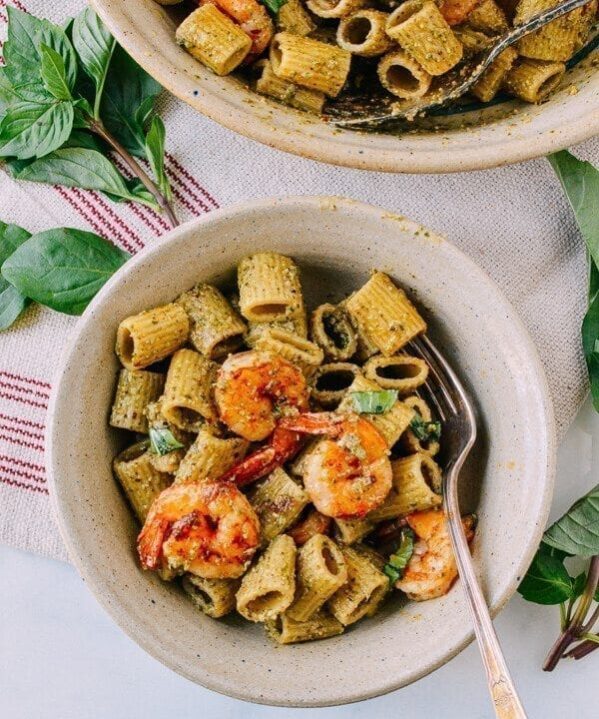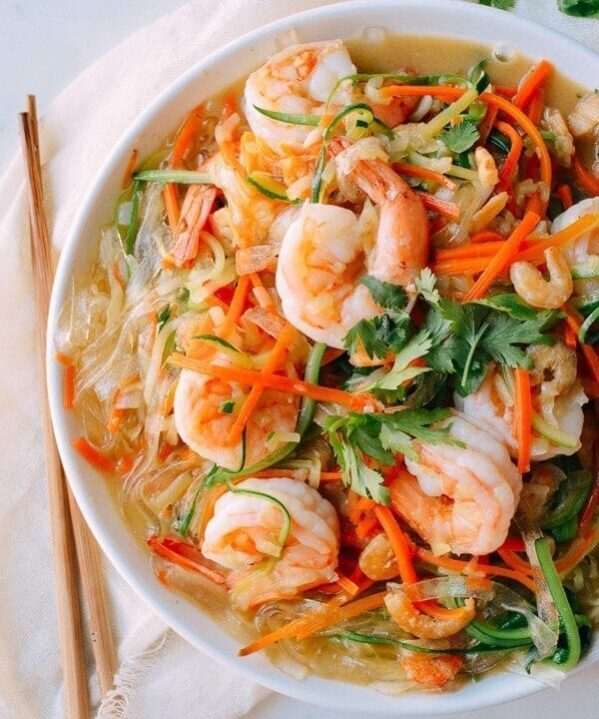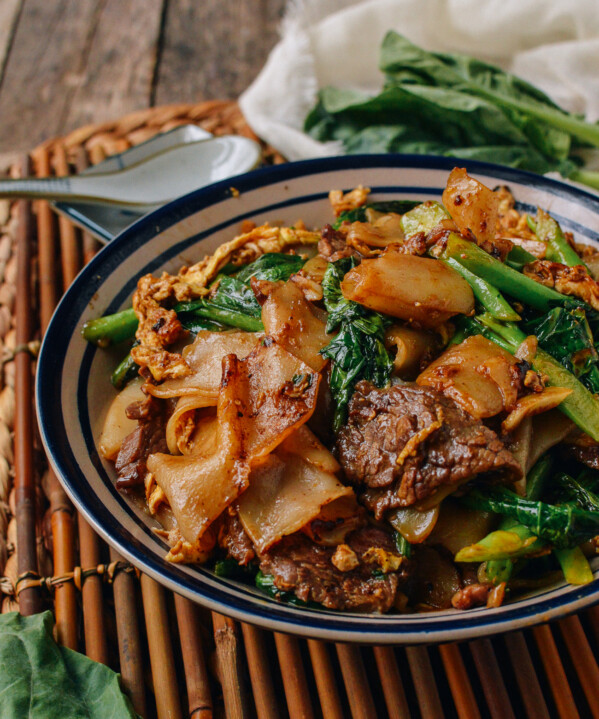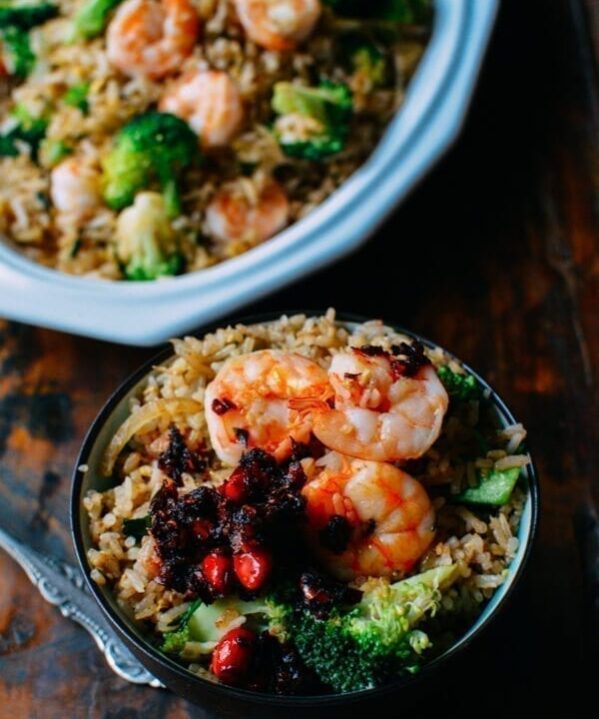We probably don’t need to really explain why we decided to post a Shrimp pad Thai recipe. As a common street food in Thailand and one of the most popular Thai dishes internationally, pad Thai is incredibly popular wherever people enjoy a good plate of noodles (which is to say…everywhere).
We’ve had many versions of Pad Thai here in the US, some good, and some that made us genuinely irritated that we ordered it! But Pad Thai is such a tasty dish when done right, and it’s something you should be able to make reliably at home.
We decided to tackle it in our kitchen, saving us lots of heartache eating gloopy, overly sweet rice noodles and saving you, our dear readers, loads on takeout orders.
Some Important Points About This Shrimp Pad Thai
Our Shrimp Pad Thai recipe incorporates many authentic ingredients, except for banana flowers—a specialty ingredient widely available in Thailand. Here in the US…well when was the last time you saw a banana tree, let alone a banana flower?!
We also tried a slightly different approach for this Shrimp Pad Thai recipe. We used whole shrimp (with the heads on).
While it may sound unnecessary and perhaps a bit off-putting compared to those squeaky clean bags of peeled and deveined frozen shrimp, the shrimp heads really add flavor and color to the dish. Take a walk on the wild side, use all of the ingredients (whole shrimp included!), and I promise you won’t be disappointed.
One more thing before I forget. You will want to use a wok that produces high heat to get that elusive wok hay flavor. If you’ve got a bit of spare time, you may want to separate this shrimp pad Thai into two batches to really get the full effect of the Thai street food vendors who make pad Thai to order one serving at a time.
Smaller portions, while not always practical, almost always guarantee better results when cooking at home. This Shrimp Pad Thai does require quite a bit of prep work and organization, but once everything is assembled, it really comes together quickly.
Shrimp Pad Thai: Recipe Instructions
Soak the dried pad Thai noodles in warm water for about 20 minutes, and drain in a colander. If the noodles are in really long strands, you will want to cut them into 10- to 12-inch lengths, or you will end up with a huge noodle ball when cooking. And nobody wants a huge noodle ball.
Remove the heads and shells from the shrimp and collect them into a bowl. Wash and devein the shrimp and set aside.
Heat 1 tablespoon of oil in your wok over high heat until just smoking. Add the shrimp heads and shells.
Stir-fry until all of the shells are bright orange, and add 2/3 cup water. When liquid comes to a boil, press the shrimp heads with your metal spatula to bring out the flavor and color. Simmer for another 5 minutes and remove from heat.
Strain the shrimp stock (about ½ cup) into a bowl and discard the heads and shells. To the bowl of stock, add sugar, tamarind paste, fish sauce, and white pepper. Mix well and set aside.
Heat 1 tablespoon of oil in your wok over high heat and sear the shrimp for 1 minute. Remove the shrimp immediately after they’ve gone opaque and are a little golden at the edges, leaving any excess oil in the wok. Set the shrimp aside.
Set the wok to medium high heat and add another tablespoon of oil. Spread the extra firm tofu in the wok in one layer, and sear on both sides until slightly browned (about 1 to 2 minutes).
Next, add the shallots, garlic, salted preserved Chinese turnip or radish, and garlic chives. Turn up the heat to high.
Time to add the noodles! Add the noodles and stir-fry for about 30 seconds, or until all the ingredients are combined.
Pour the tamarind-shrimp sauce mixture over the noodles, and stir fry for 30 seconds or so. Push the noodles to one side of the wok to make way for the eggs. Add two tablespoons of oil to the clear area of the wok.
Crack the three eggs in, using your spatula to lightly beat them in the wok (how’s that for an oxymoron?). Fold the eggs gently without completely scrambling them, and when they’re about 60% done, fold the noodles over the eggs.
Lastly, add the bean sprouts.
Stir fry everything at high heat until the bean sprouts are just cooked (about 1 to 2 minutes, depending upon how hot your flame can get).
Toss in the cooked shrimp, and serve the Shrimp Pad Thai with crushed peanuts and cilantro on top, if using. For more noodle goodness, check out all our noodle (and rice/pasta) recipes here.
Shrimp Pad Thai
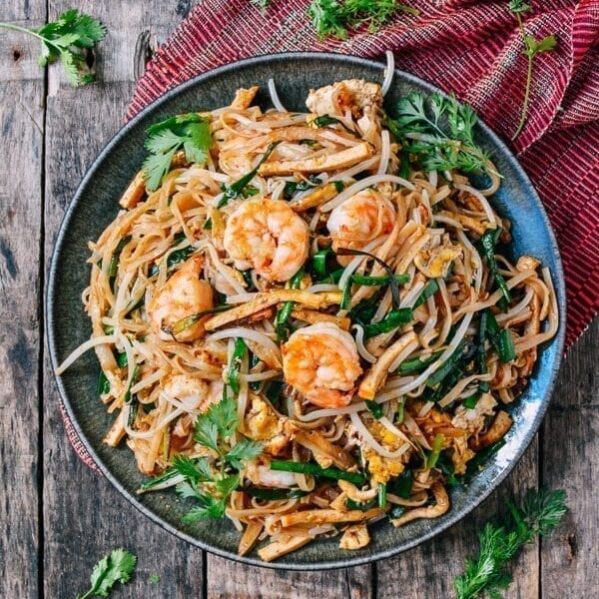
Ingredients
- 8 ounces dried pad Thai noodles (225g)
- 8 ounces whole shrimp (225g, with heads on if you can get them)
- 4 tablespoons oil (divided)
- 2/3 cup water (160 ml)
- 3 tablespoons sugar
- 2 tablespoons tamarind paste
- 3 tablespoons fish sauce
- white pepper (to taste)
- ½ block extra firm tofu (cut into thin rectangles)
- 1 medium shallot (thinly sliced)
- 3 cloves garlic (sliced)
- 2 tablespoons salted preserved Chinese turnip (washed in warm water and julienned, optional)
- 2 cups Chinese garlic chives (cut in inch long pieces)
- 3 medium eggs (preferably at room temperature)
- 2 cups mung bean sprouts (washed and drained)
- 2 tablespoon roasted peanuts (crushed)
- a handful of cilantro leaves (optional)
Instructions
- Soak the pad thai noodles in warm water for about 20 minutes, and drain in a colander. If the noodles are in really long strands, you will want to cut them into 10- to 12-inch lengths, or you will end up with a huge noodle ball when cooking. And nobody wants a huge noodle ball.
- Remove the heads and shells from the shrimp and collect them into a bowl. Wash and devein the shrimp and set aside.
- Heat 1 tablespoon of oil in your wok over high heat until just smoking. Add the shrimp heads and shells. Stir-fry until all of the shells are bright orange, and add 2/3 cup water. When liquid comes to a boil, press the shrimp heads with your metal spatula to bring out the flavor and color. Simmer for another 5 minutes and remove from heat. Strain the shrimp stock (about ½ cup) into a bowl and discard the heads and shells. To the bowl of stock, add sugar, tamarind paste, fish sauce, and white pepper. Mix well and set aside.
- Heat 1 tablespoon of oil in your wok over high heat and sear the shrimp for 1 minute. Remove the shrimp immediately after they've gone opaque and are a little golden at the edges, leaving any excess oil in the wok. Set the shrimp aside.
- Set the wok to medium high heat and add another tablespoon of oil. Spread the firm tofu in the wok in one layer, and sear on both sides until slightly browned (about 1 to 2 minutes). Next, add the shallots, garlic, preserved turnip (if using), and chives. Turn up the heat to high.
- Time to add the noodles! Add the noodles and stir-fry for about 30 seconds, or until all the ingredients are combined. Pour the tamarind-shrimp sauce mixture over the noodles, and stir fry for 30 seconds or so. Push the noodles to one side of the wok to make way for the eggs.
- Add two tablespoons of oil to the clear area of the wok. Crack the three eggs in, using your spatula to lightly beat them in the wok (how's that for an oxymoron?). Fold the eggs gently without completely scrambling them, and when they're about 60% done, fold the noodles over the eggs.
- Lastly, add the bean sprouts. Stir fry everything at high heat until the bean sprouts are just cooked (about 1 to 2 minutes, depending upon how hot your flame can get). Toss in the cooked shrimp, and serve the Shrimp Pad Thai with crushed peanuts and cilantro on top, if using.
nutrition facts
